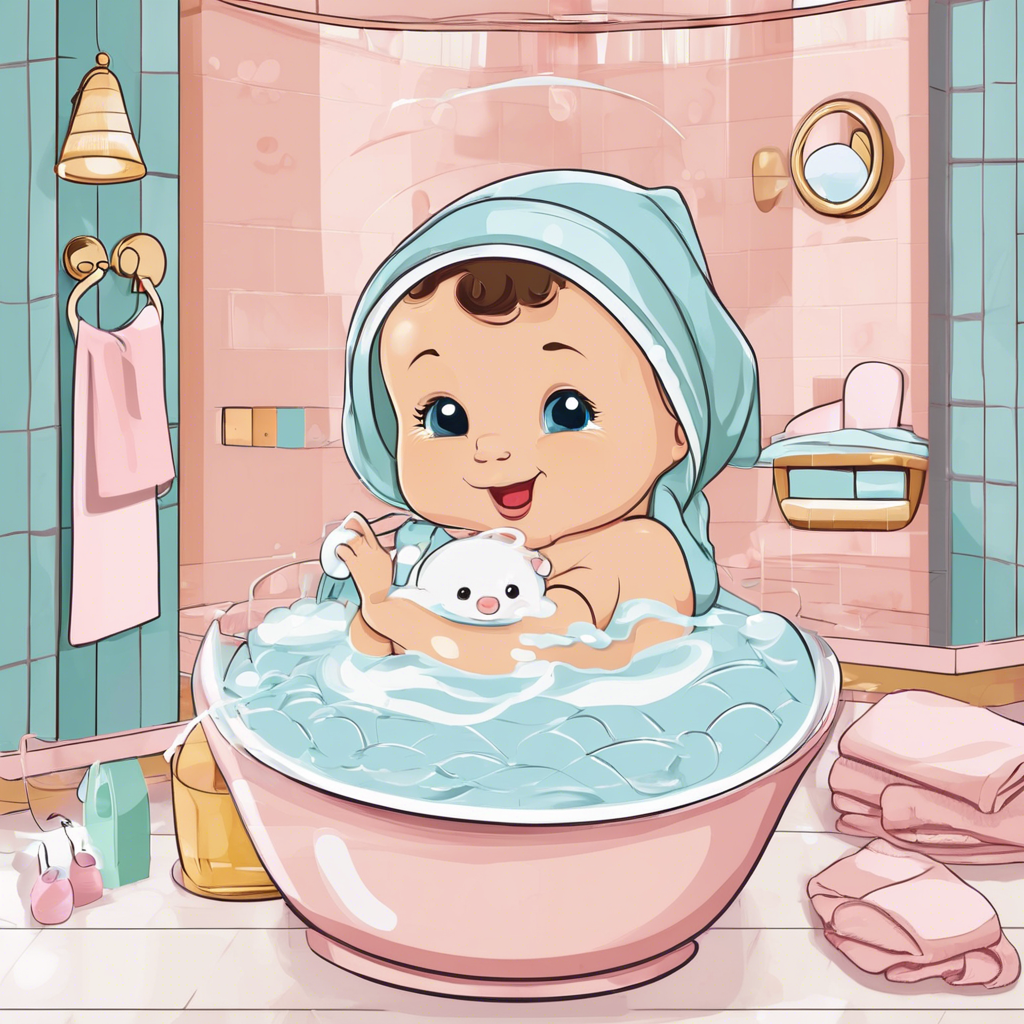Bathing a newborn is a delicate task that requires patience, gentleness, and proper preparation. While it might seem intimidating at first, understanding the process can help parents feel more confident and ensure a safe and comfortable experience for their baby. Newborns do not need daily baths, as their skin is sensitive and prone to dryness. Instead, a bath two to three times a week is sufficient. Until the umbilical cord stump falls off, usually within the first two weeks, sponge baths are recommended to keep the baby clean without submerging them in water. Once the cord is gone, parents can transition to a traditional bath.
Before starting, it is essential to gather all necessary supplies. Having everything within arm’s reach prevents the need to leave the baby unattended, which can be dangerous. A newborn bathtub or a sink lined with a soft towel provides a secure bathing area. Mild baby soap and shampoo, a soft washcloth, a cup for rinsing, a hooded towel, a clean diaper, and fresh clothes should be readily available. Water temperature is crucial; it should be lukewarm, around 37°C (98.6°F). A baby bath thermometer can help ensure the water is neither too hot nor too cold.
To begin a sponge bath, place the baby on a comfortable, flat surface with a towel underneath. Keep a hand on the baby at all times for security. Dip a washcloth in warm water, wring it out, and gently wipe the baby’s face, starting with the eyes and using a clean section of the cloth for each eye. Avoid using soap on the face, as it can be harsh on sensitive skin. Move to the rest of the face, ears, and neck folds, where milk residue and sweat can accumulate. Wash the arms, hands, chest, and back, ensuring all creases are cleaned. Finally, clean the diaper area, wiping front to back for baby girls and ensuring baby boys’ genitals are cleaned gently.
Once the umbilical cord falls off, a full bath can be introduced. Fill the baby bathtub with two to three inches of warm water. Support the baby’s head and neck with one hand while lowering them into the water feet-first. Keeping a secure grip is essential, as newborns can be slippery when wet. Use a washcloth to gently clean the baby’s body, starting with the face and working downward. A small amount of mild baby soap can be used, but excessive use may dry out the skin. Rinse the soap thoroughly with a cup of warm water, ensuring no residue remains. If washing the hair, cradle the baby’s head over the tub and pour water gently over their scalp, using a mild shampoo if necessary.
Drying the baby immediately after a bath is essential to prevent chills. A soft, hooded towel helps keep them warm. Gently pat the baby’s skin dry instead of rubbing, which can cause irritation. Pay extra attention to skin folds where moisture can linger, as damp areas may lead to rashes. Once dry, applying a gentle, fragrance-free baby moisturizer can help maintain skin hydration, especially for babies prone to dryness. Dressing the baby in a clean diaper and soft clothing completes the process.
Some babies may initially dislike baths due to the unfamiliar sensation of water, but a calm and soothing approach can help them feel more comfortable. Talking softly, maintaining eye contact, and keeping the room warm can create a more relaxing experience. Over time, many babies grow to enjoy bath time as a bonding activity with their parents.
Safety is a top priority during bath time. Never leave a baby unattended in water, even for a few seconds. Keeping one hand on the baby while reaching for supplies ensures stability. If an emergency arises, wrap the baby in a towel and take them with you rather than leaving them alone. Water depth should always remain shallow, and parents should check the temperature before placing the baby in the tub. Bathing should take no longer than five to ten minutes to prevent the baby from getting cold.
Choosing the right baby bath products can make a difference in the baby’s skin health. Harsh soaps, fragrances, and dyes can cause irritation. Opting for gentle, pH-balanced cleansers designed specifically for newborns helps maintain their delicate skin barrier. Natural ingredients such as chamomile, aloe vera, and oat extracts can provide soothing benefits. Avoiding adult shampoos and soaps is crucial, as they may contain ingredients too strong for a baby’s skin.
After bath time, a consistent post-bath routine can help signal to the baby that it is time to wind down. Many parents incorporate bath time into their bedtime routine, as a warm bath can have a calming effect. Following up with a gentle massage using baby lotion or oil can further relax the baby. Dressing them in soft, breathable pajamas and swaddling if needed creates a cozy environment.
As babies grow, their bath routine may change. Infants who begin sitting up can transition to a larger tub with more water play opportunities. Introducing bath toys, such as soft rubber ducks or floating cups, can make bath time more enjoyable. Parents should always supervise and adjust water temperature and depth based on the baby’s age and comfort level.
A well-prepared and relaxed approach to bathing a newborn ensures a positive experience for both the baby and the parents. Understanding the baby’s cues and preferences helps create a nurturing environment. Over time, bath time becomes more than just a cleansing routine—it transforms into a special bonding moment filled with laughter, splashes, and cherished memories.

